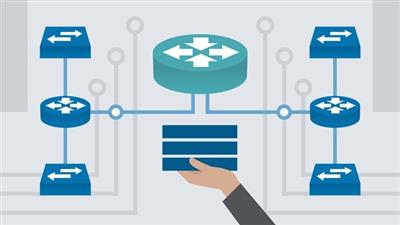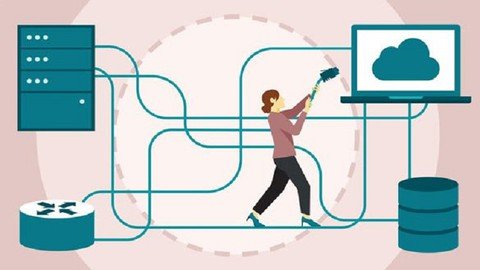Policy Based Routing (Pbr) Introduction & Configuration
"softddl.org"
11-11-2022, 13:54
-
Share on social networks:
-
Download for free: Policy Based
-

Published 9/2022
MP4 | Video: h264, 1280x720 | Audio: AAC, 44.1 KHz
Language: English | Size: 808.08 MB | Duration: 2h 1m
Policy Based Routing (PBR)

Published 9/2022
MP4 | Video: h264, 1280x720 | Audio: AAC, 44.1 KHz
Language: English | Size: 808.08 MB | Duration: 2h 1m
Policy Based Routing (PBR)
What you'll learn
Policy Based Routing with ACL
Policy Based Routing with Packet Length
Local Policy Based Routing
Default Policy Based Routing
Requirements
CCNA ( Cisco Certified Network Associate )
Description
PBR is the process of using a route map to specify an attribute other than the destination and then define the path out of the router based on those conditions.With PBR, a network administrator can select policies according to specific parameters, such as:• The IP address of the source or the destination• The port of the source or destination• The kind of traffic• Network protocols• The sizes of data packets• An access listOnce parameters like these are established, the data packets get routed accordingly. This empowers you to increase the agility of the network.Because you can define your routing strategy using the attributes of applications, you can execute specific traffic-management policies that control how packets get forwarded.In this way, you can optimize how bandwidth gets used by your most important applications.PBR is considered to be an exception to the routing information base (RIB) and is looked at before examining the RIB. This allows for more routing options.For example, within the route map used for PBR, you can match on an access control list (ACL) that then matches on source, destination, protocol type, and/or port numbers.You can also match on:• Quality of service (QoS) marking, such as Internet Protocol (IP) precedence or differentiated services code point (DSCP)• The size of the packets, effectively enabling you to send data where you want it to go based on how big or small its packets areOnce you have a positive match, you can then set the next hop device's address and/or egress interface. You can also set QoS values at the same time, which enable you to ensure an application gets the resources it needs to function as well as you need it to.
Overview
Section 1: Policy Based Routing (PBR) Introduction & Configuration
Lecture 1 PBR - Policy Based Routing with ACL - ArashDeljoo
Lecture 2 PBR - Policy Based Routing with Packet Length - ArashDeljoo
Lecture 3 PBR - Local Policy Based Routing - ArashDeljoo
Lecture 4 PBR - Default Policy Based Routing - ArashDeljoo
Lecture 5 PBR - PBR Trouble Tickets
Network Engineers
Homepage
https://www.udemy.com/course/policy-based-routing-pbr-introduction-configuration/
https://rapidgator.net/file/e6f2117aa6f2fc709453ded264290f5e/ptarm.Policy.Based.Routing.Pbr.Introduction..Configuration.rar.html

https://uploadgig.com/file/download/bC4db47aa526dbE9/ptarm.Policy.Based.Routing.Pbr.Introduction..Configuration.rar

https://nitroflare.com/view/025829CE7C329E3/ptarm.Policy.Based.Routing.Pbr.Introduction..Configuration.rar
Links are Interchangeable - No Password - Single Extraction
The minimum comment length is 50 characters. comments are moderated





